In July, we had the opportunity to make an awesome flight to Salida, Colorado. This place is a great destination for Texas pilots. The cool summer weather and beautiful scenery are a nice break from the heat, and the flight distance is such that flying a small plane from Texas makes a lot of sense.
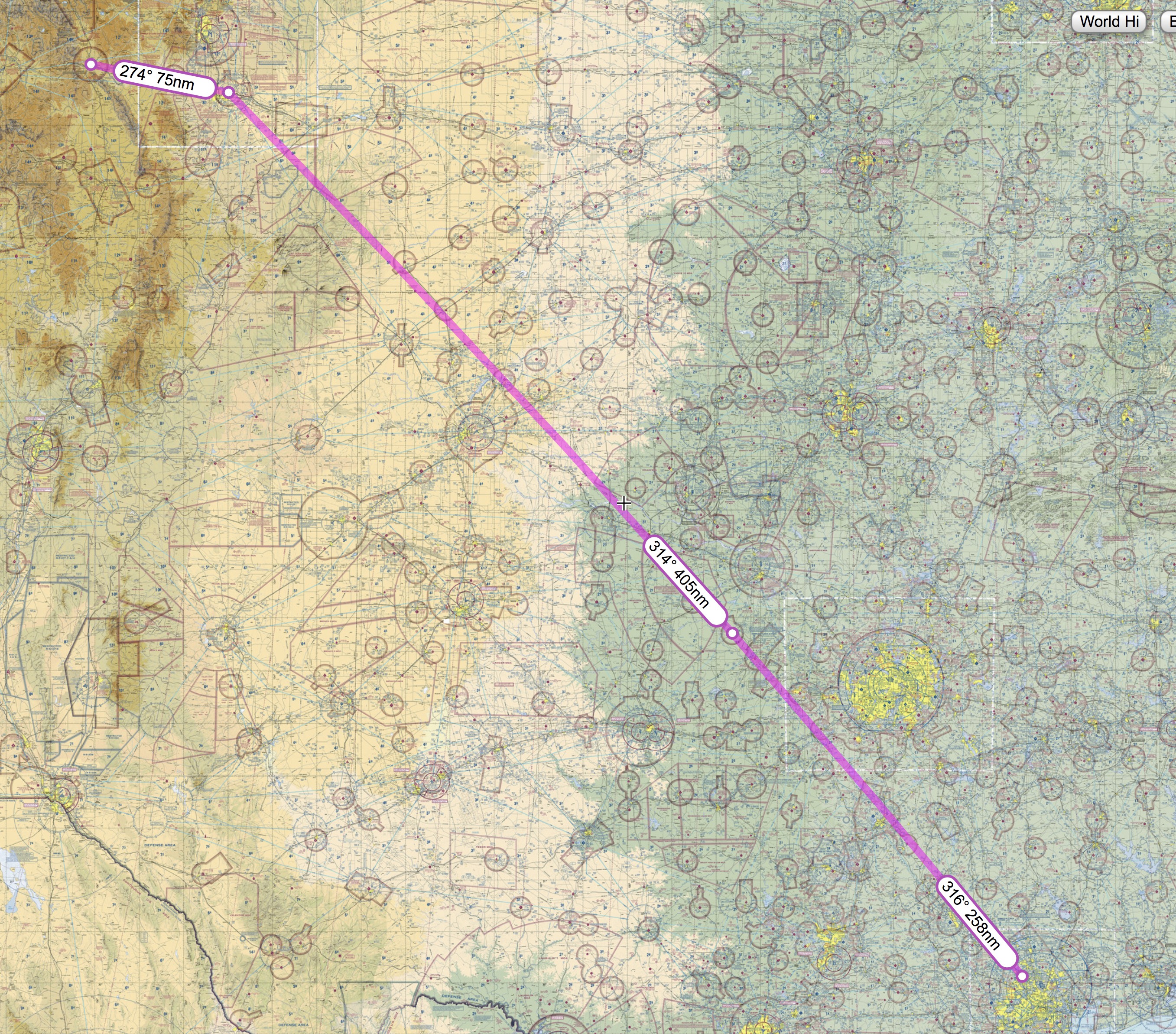
Flying to Salida, Colorado takes you very close to some of the highest mountains in Colorado. The route of flight from Pueblo follows the Arkansas River valley to Salida. You pass several 10 to 11 thousand foot peaks along the way and end up at the base of several “fourteeners” (Colorado is known for many mountains exceeding 14,000 feet, including one you can drive to the top of called Pikes Peak!). Following the valley at 10,500 provides plenty of safety margin along the route.
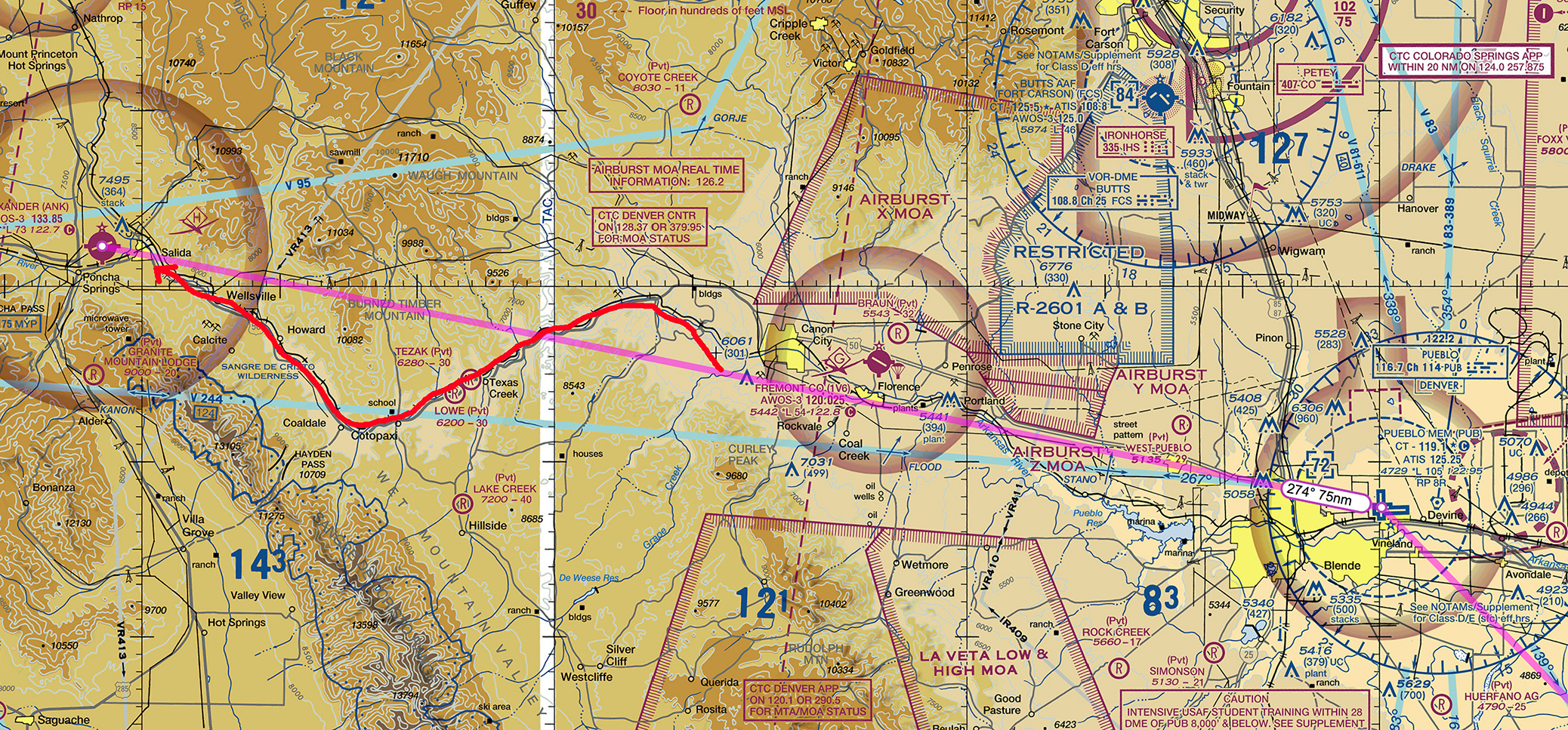
Our flight began at around 0830. We filed IFR out of KDWH due to low clouds but were soon on top in smooth, clear air.
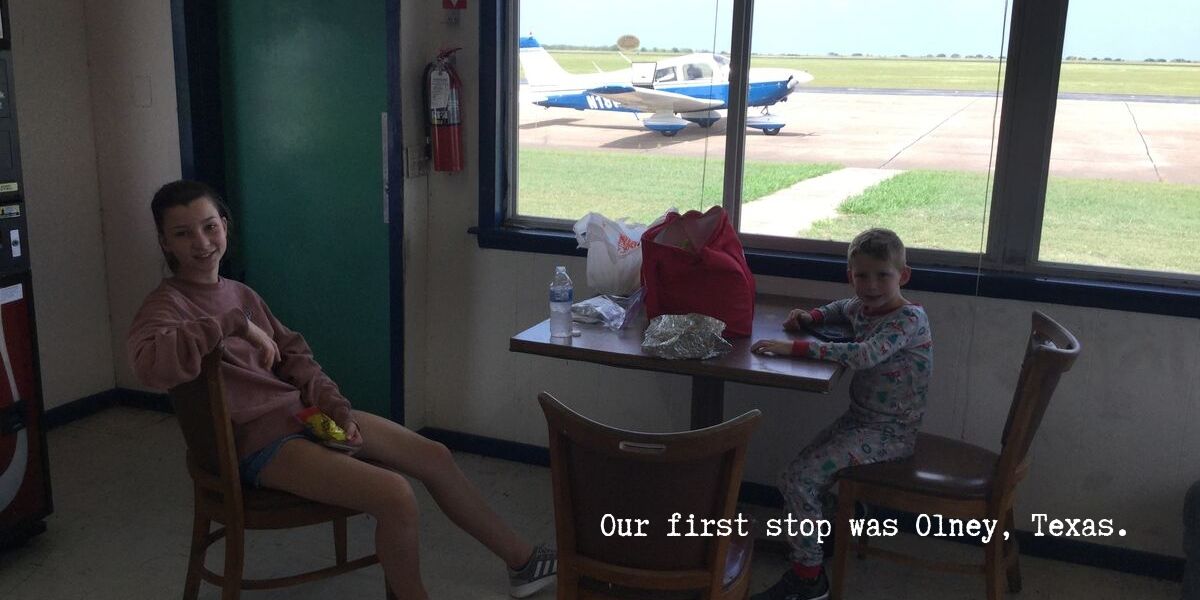
Our first stop was in Olney, Texas (KONY). After a brief lunch in the air conditioned pilot lounge we filled our tanks to the tabs with inexpensive 100LL and were back in the air.
Our flight across the Texas panhandle, between Olney and Pueblo, brought higher cloud bases and some summer thunderstorms that ATC helped us navigate around. At one point, it looked like we would have to land at an alternate airport, but the storms dissipated and we made it all the way to KPUB, in Pueblo, CO. The Flower FBO was a real treat. Cold air conditioning and free ice cream gave us some time to rest up and determine if weather conditions would permit us to fly the final leg of our journey into the mountains. I had pre-arranged a phone call with the airport manager at KANK in Salida to check conditions in the mountains, knowing that typical afternoon weather patterns in Colorado mountains might delay our flight or convince us to rent a car in Pueblo. Fortunately, the weather was reported as clear and the winds aloft at 12,000 feet were significantly less than 25 knots. Our flight required us to climb from 4729 feet, the KPUB field elevation, to 10,500 feet, a safe altitude for flying up the valley to Salida. Field elevation for KANK is 7523 feet. Given the hot temps of 85-90 fahrenheit, the density altitude of our flight was going to be around 14,000. Fortunately, our plane was lightly loaded and we carried minimum fuel for the 45 minute flight.
The flight up the valley was breathtaking. As we followed the valley, snow capped peaks from the Sangre de Cristo mountains and later the Collegiate Peaks came into view. We passed several lessor peaks at eye level, but always had good escape routes to the floor of the valley, which had plenty of fields and several airports along the way.

The Archer made it to 10,500 but some downdrafts would gently overpower our ability to maintain altitude. Then, an updraft would send us up over 11,000 for a while. We never felt nervous and always had plenty of room to glide down if needed.

Salida is a beautiful little town that has skiing, hiking, mountain biking, jeep trips, white water rafting, great restaurants and a friendly small town atmosphere. The day after our arrival, we went on an amazing, “family float” whitewater rafting trip with Salida Anglers. The kids loved it. I recommend using the free wet suits they offer. The water is really cold!
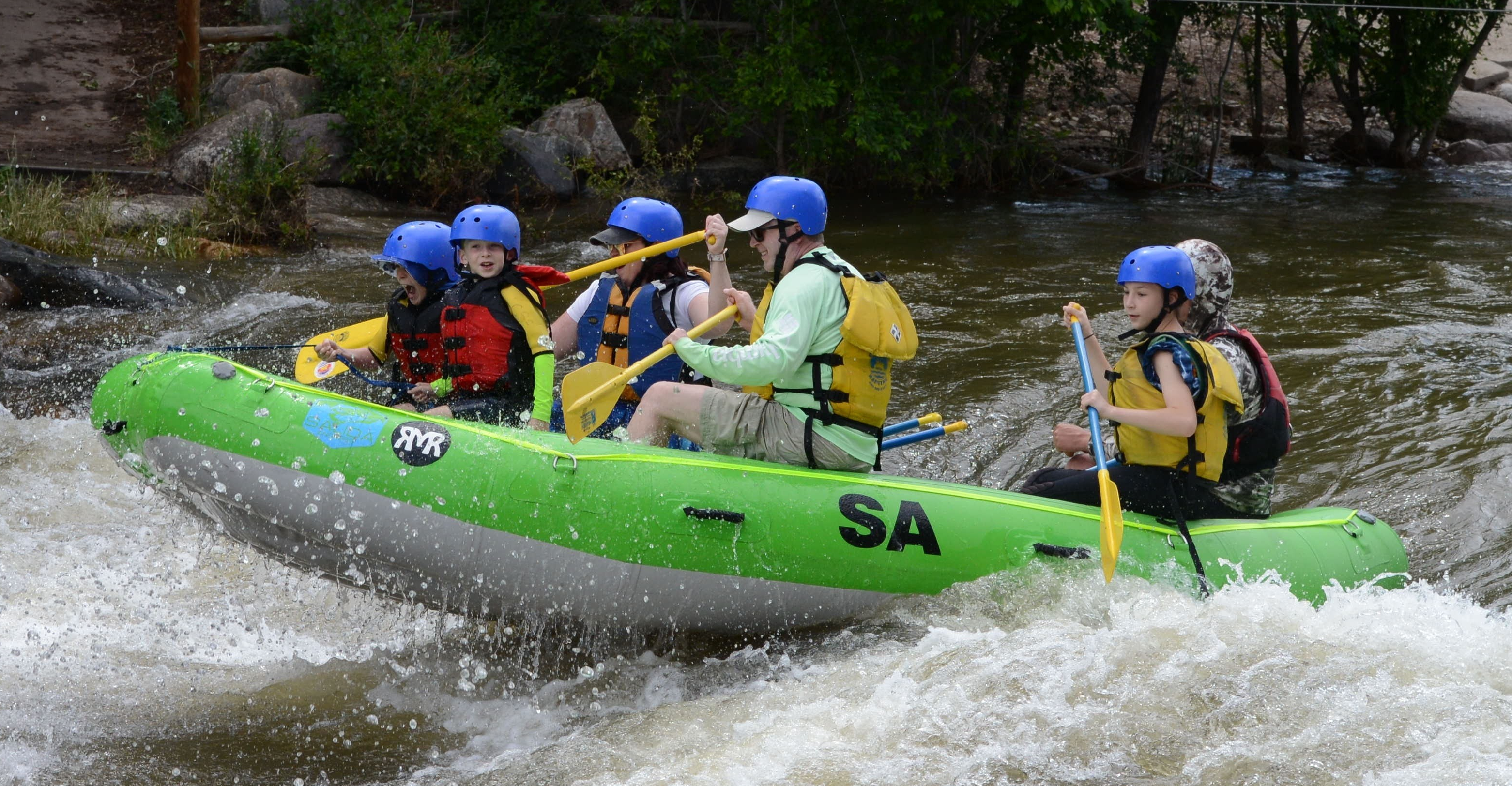
Another cool thing we did was to rent a jeep from Craig Anderson of Anderson Motor Company (www.rockymountainjeeprentals.com). Craig is a great guy. We rented a Chevy Trailblazer for our stay in Salida and exchanged the Chevy for a Jeep for one day. Craig sat down and patiently gave us a full briefing on a jeep routes that would take us over Marshall Pass so the kids could see some snow.
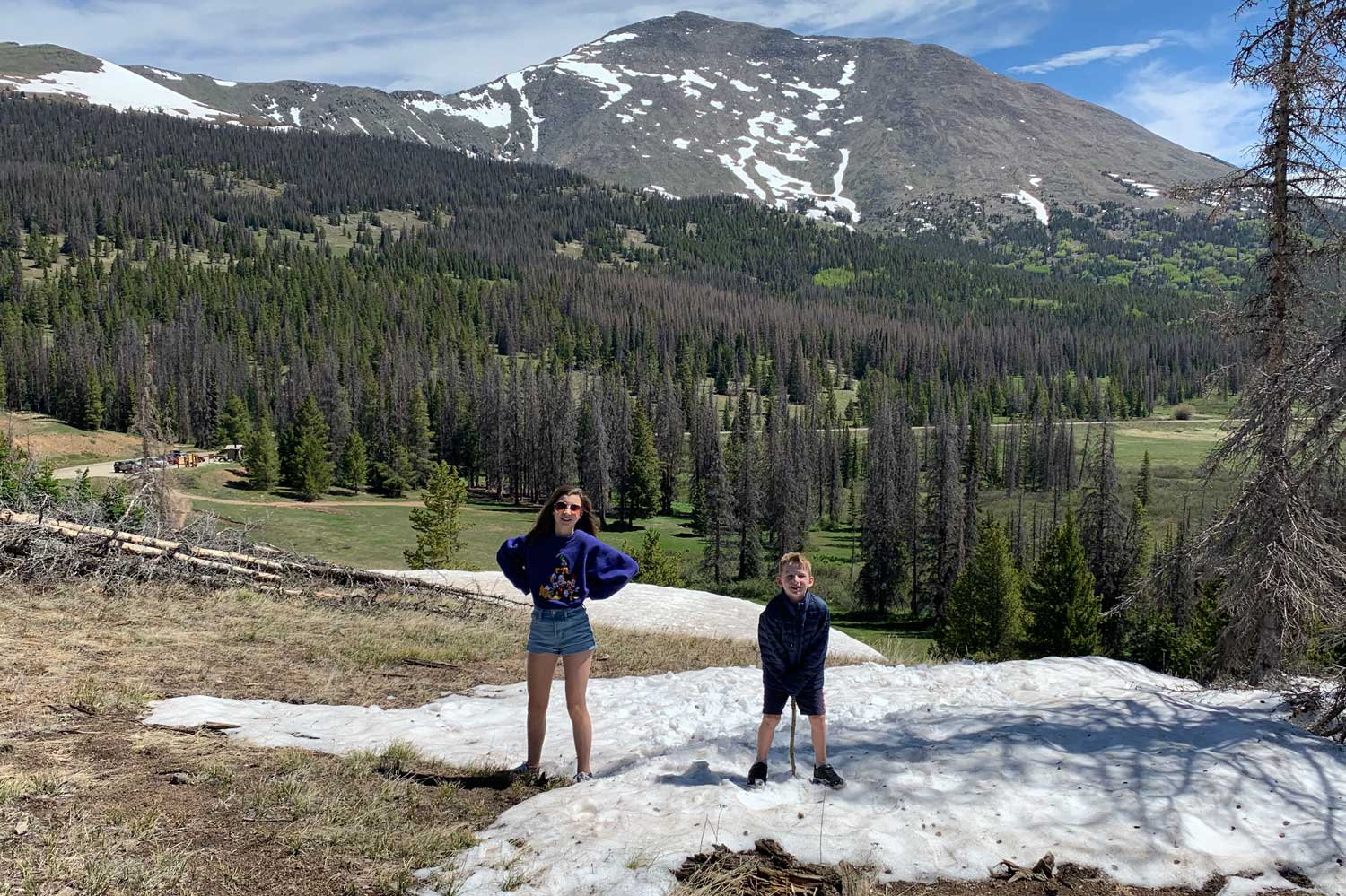
Tips for Flying into the Mountains
When flying into the mountains you want to pay special attention to the winds aloft at the higher altitudes. For example a strong westerly wind blowing over the 14k peaks can result in unsafe updrafts and downdrafts downwind of the tall peaks (Visualize the effect of water rolling over a large rock in a stream).
Pay attention to density altitude. It can make a huge difference in performance.
Closely supervise fueling of the aircraft. You want to make sure that the exact amount of fuel you need for your weight and balance is put in the tanks.
Get mountain flying instruction. Find a local instructor who will help you learn to safely fly in the mountains. Also, there are several publications available for free on the web:
- https://www.faa.gov/regulations_policies/handbooks_manuals/aviation/media/tips_on_mountain_flying.pdf
- https://www.faa.gov/news/safety_briefing/2017/media/SE_Topic_17_04.pdf
- https://www.ntsb.gov/safety/safety-alerts/Documents/SA_039.pdf
- https://www.aopa.org/pic-archive/mountain-flying
Get comfortable leaning the mixture before takeoff. Taking off from a mountain airport with mixture full rich can significantly affect engine performance.
Colorado runways tend to be longer, due to the high density altitude. Be sure to rotate based on indicated airspeed, rather than speed of the ground whizzing by. It’s going to look different!
Bring survival equipment! There are many places to land, but you might be stuck there a while.
Most of all, have be safe and have fun!



You must be logged in to post a comment.